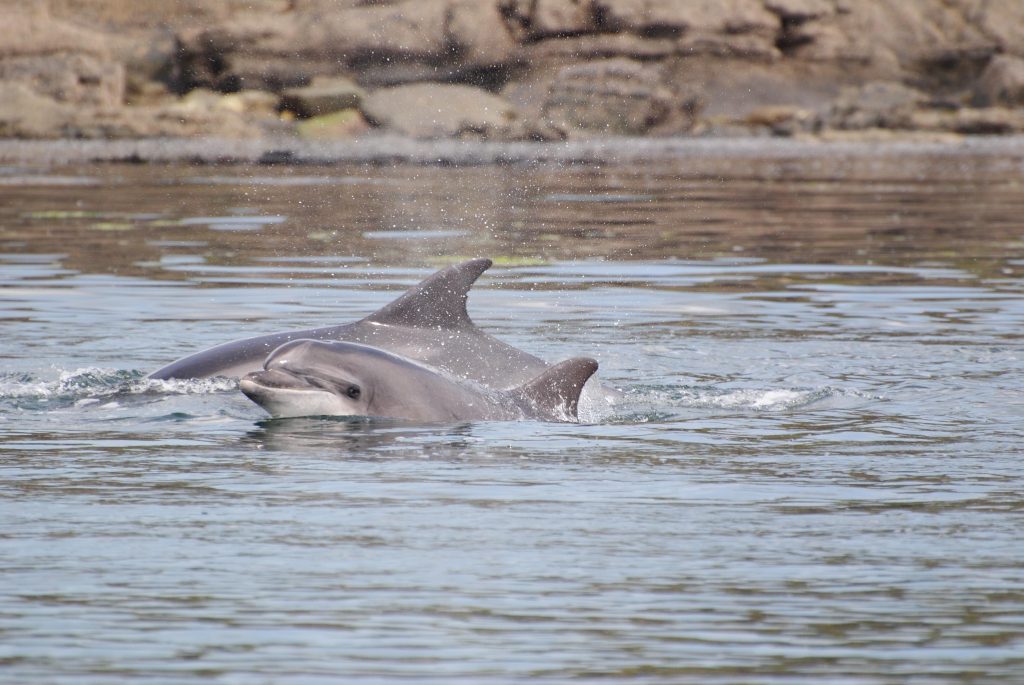“we normally pick the dolphins up around here” said skipper Joe Aston as we steamed west of Kilcredaun Head in the Shannon Estuary. Seconds later two large, adult bottlenose dolphins came to the bow of the White Bank a 50ft gillnetter which was heading for a week’s fishing west of Loop Head. A few minutes later they were gone. My first encounter with the Shannon Dolphins started and ended within a few minutes on that day in July 1991.
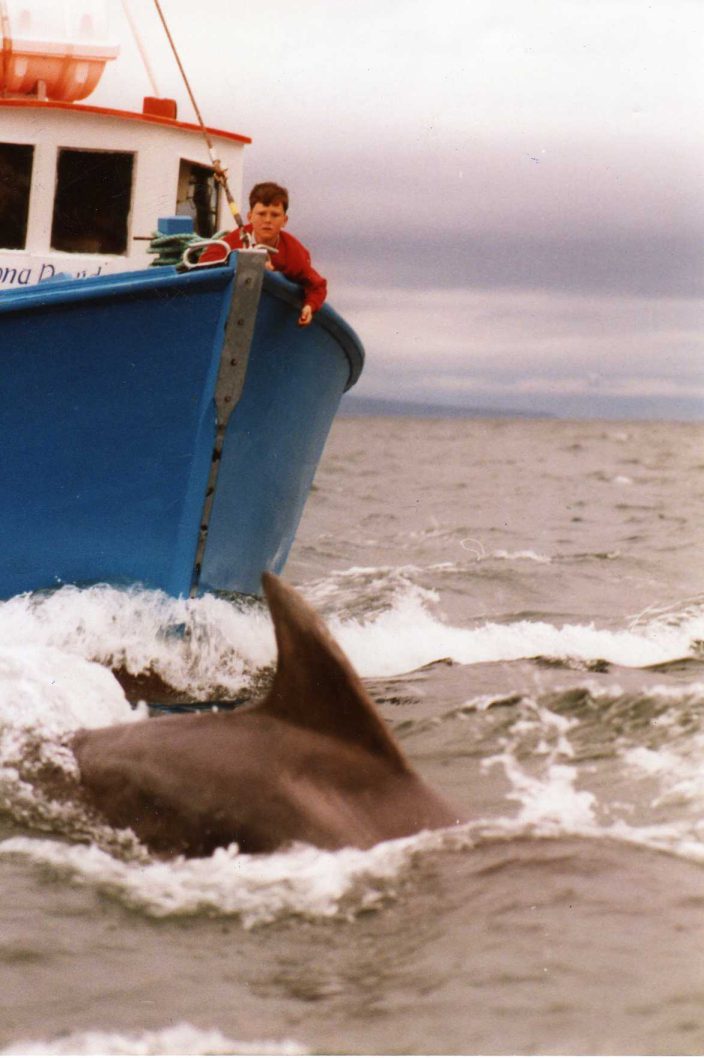
Daithi Magee watching a dolphin bow-riding from the Fiona David in the early days
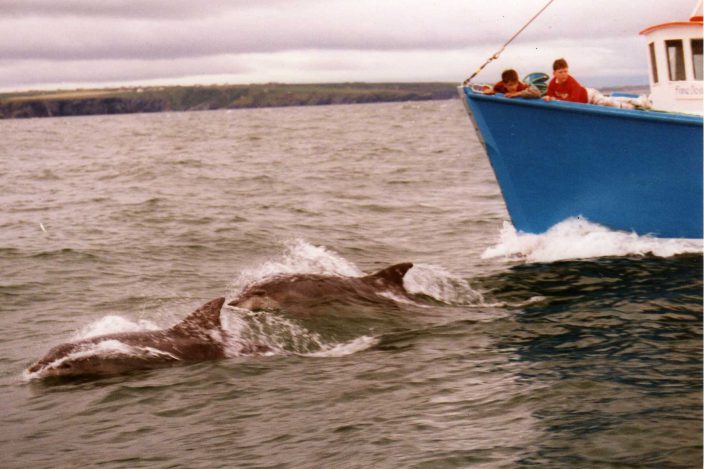
Watching dolphins bow-riding from the bow of Fiona David in the early days
I had been invited out by Joe for a week’s fishing to learn about commercial fishing onboard an Irish gillnetter. Little did I know it would introduce me to the dolphins, which would remain part of my life for the next 30 years. During the six days at sea, we talked about the uniqueness of having dolphins “all the time in the estuary” as Joe suggested and the opportunities this may provide. After the trip, Joe who was Chair of the local West Clare Fishermens’ Co-operative based in Carrigaholt shared our conversations with co-op manager Paddy Farrell. They contacted me a few weeks later and we discussed trying to get funding for a pilot scheme to learn more about the dolphins and explore the feasibility of commercial dolphin-watching. We applied to the local regional tourism agency Shannon Development who, through the support of Clare Manager John Quinlivan, provided funds for a six month pilot the following summer (1992). Excited about the possibilities I borrowed money to purchase a second-hand Rigid Inflatable Boat (RIB) and Canon SLR camera but unfortunately, due to difficulties at the co-op, we couldn’t start the project that year. The funding rolled over and on 2 May 1993 me and Brian Holmes, headed out into the estuary in an ex-RNLI RIB in search of dolphins……
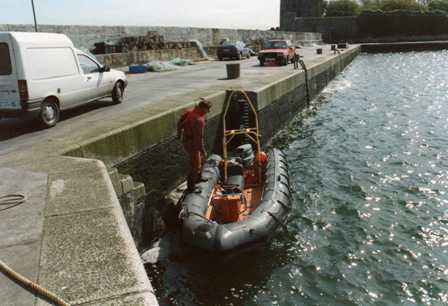
Simon boarding the project’s first RIB at Carrigaholt Pier.
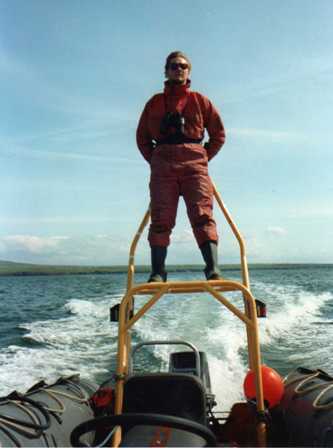
Simon surveying from back of RIB.
We didn’t find any ……………. However, the following day, 3 May, we tried again, and this time photographed four bottlenose dolphins. Over the next six months we carried out 27 transects on the estuary, located dolphins on 73% of surveys and ended with 25 individual dolphins recognisable through photo-id. We sought to use these data to dtermine the distribution and abundance of bottlenose dolphins in the estuary to see if they could support commercial dolphin-watching. Thirty years later we know a lot more about the dolphins, their lives and how they use the estuary and five of the original 25 first recorded in 1993 are known to be still alive today. The estuary has become well-known for its resident dolphins and the Shannon Dolphin Project is know one of the longest running dolphin research projects in Europe.

Shannon bottlenose dolphins 006- Sarafina and 242-Sandy Salmon in the Shannon Estuary in June 2014
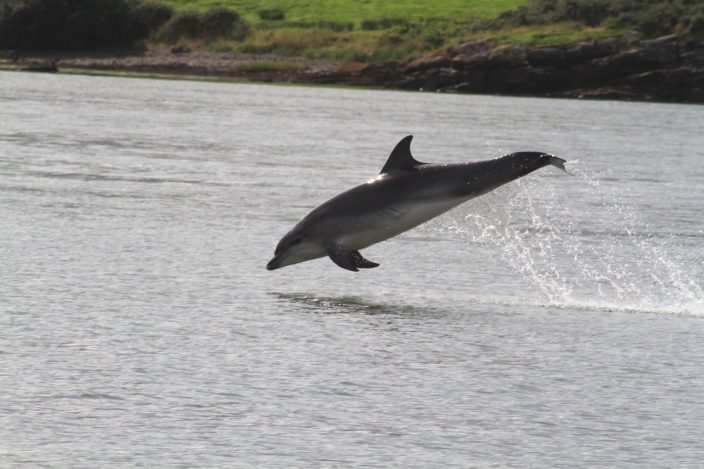
Bottlenose dolphin calf breaching in the Shannon Estuary in August 2015
Dr Simon Berrow
IWDG Chief Executive Officer
This article is the first of a number reflecting on first 30 years of the Shannon Dolphin Project (1993-2023) to be published by the Irish Whale and Dolphin Group during the year.
Download and read research article at Distribution and Abundance of Bottle-Nosed Dolphins Tursiops truncatus (Montagu) in the Shannon Estuary, Author(s): Simon D. Berrow, Brian Holmes and Oliver R. Kiely
Source: Biology and Environment: Proceedings of the Royal Irish Academy, Vol. 96B, No. 1 (Jun., 1996), pp. 1-9
Published by: Royal Irish Academy

